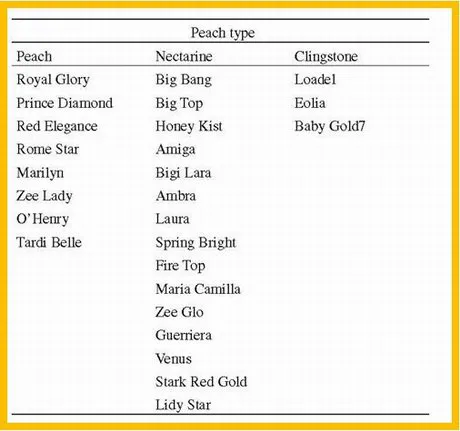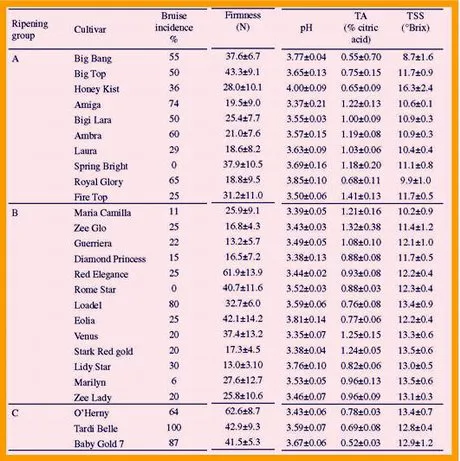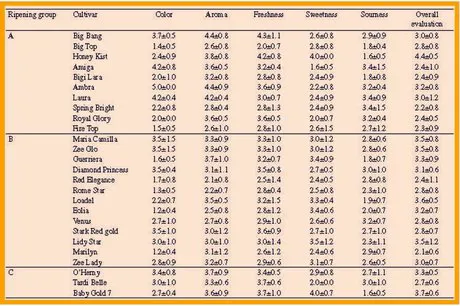Tab 1. Peach varieties grouped in Peach, Nectarine and Clingstone.

Sensorial evaluations were performed on the peach purée kept at 5°C within 3 hours after processing. The sensorial test was conducted by using a scale from 1 to 5, where 1 was severe browning and 5 was not browned, for pulp colour; 1 was less intense and 5 was very intense for aroma, freshness, sweetness and sourness; and 1 was really poor and 5 was excellent for overall quality.
From the multivariate Principal Component Analysis resulted that (Tables 2 and 3):
- Among early varieties, ‘Honey Kist’ showed the lowest acidity and an intermediate susceptibility to mechanical damage caused by minimally processing;
- Among intermediate varieties, ‘Stark Red Gold’, ‘Zee Glo’ and ‘Venus’ resulted significantly different for sensorial properties, while ‘Loadel’ and ‘Eolia’ resulted more susceptible to the pulp browning;
- Among the late varieties, ‘Tardi Belle’ and ‘Baby Gold7’ were significantly different from the others for the flavour, but they are more susceptible to the mechanical damage.
Tab 2. Chemical and physical parameters evaluated on peach, nectarine and clingstone peach varieties for Group A (early maturing), Group B (middle maturing) and Group C (late maturing).
Tab 3. Sensorial parameters evaluated on purées of peach, nectarine and clingstone peach varieties for Group A (early maturing), Group B (middle maturing) and Group C (late maturing). Click here to enlarge the table.
Source: Colantuono F., Amodio M.L., Piazzolla F., Colelli G., "Influence of quality attributes of early, intermediate and late peach varieties on suitability as fresh-convenience products", Advances in Horticultural Science, 2012, Vol. 26(1), pagg. 32-38. Further info: http://www.fupress.net/index.php/ahs/article/view/12750


